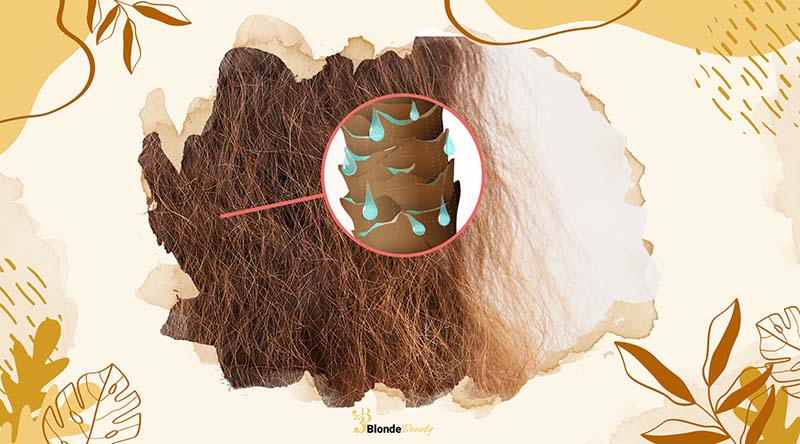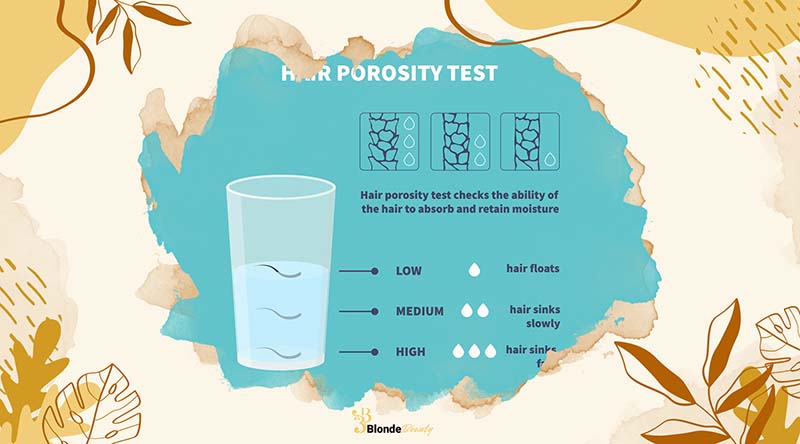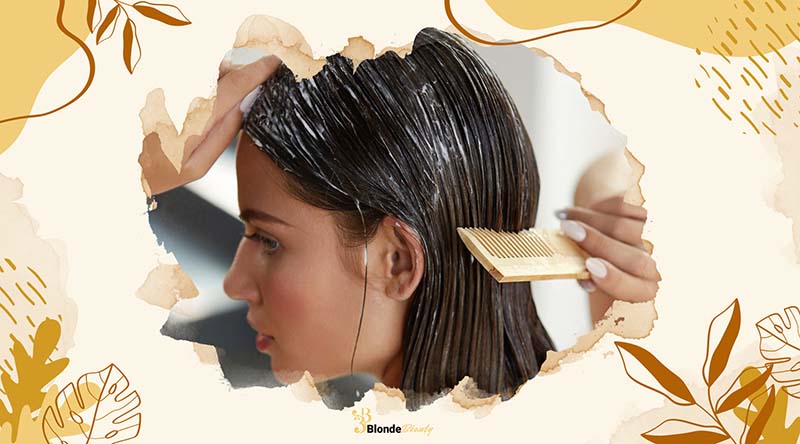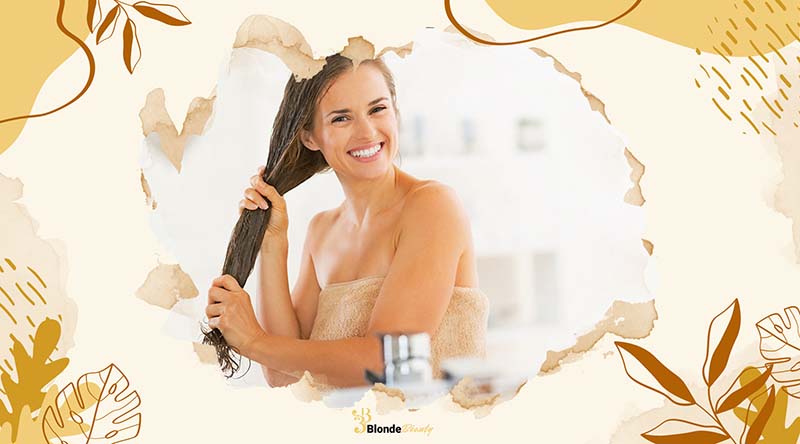Achieving shiny, gorgeous hair requires diligence, consistency, and a bit of knowledge. While you might be familiar with your hair’s natural texture and color, understanding hair porosity is equally important. So, what is high porosity hair? Simply put, hair porosity refers to how well your hair can absorb and retain moisture, with high porosity hair having a unique set of challenges and needs.
Knowing your hair porosity is essential for tailoring your hair care routine and selecting the right products. If you’re aiming to give your natural hair the best care possible, it’s crucial to determine if you have high porosity hair and learn how to manage it effectively. In this guide, we’ll explore what high porosity hair means and provide tips for maintaining healthy, beautiful hair.
Is High Porosity Hair Bad?
Understanding hair porosity is crucial for maintaining healthy and beautiful hair. Porosity refers to the number and sizes of holes and cracks within your hair strands, affecting their ability to absorb and retain moisture. It determines how easily your hair can take in and hold onto water, oils, and other products.
If you have high porosity hair, your hair likely has more cracks and holes in the cortex, and your cuticles are probably raised or missing. This can lead to several issues, such as weak strands prone to breakage, persistent split ends, and constant frizz.
Notes:
- Managing High Porosity Hair: Use leave-in conditioners and deep conditioning treatments regularly to help lock in moisture.
- Avoid Heat Damage: Minimize the use of heat styling tools, as they can exacerbate the issues associated with high porosity hair.
- Protective Styles: Consider protective hairstyles like braids or twists to reduce hair manipulation and potential damage.

Signs of High Porosity Hair
The internet is full of DIY tests to determine your hair’s porosity, but simply observing your hair’s typical behavior can also help you figure out your hair type. You might have high porosity hair if you notice the following characteristics:
Easily Tangles: If you always keep a wide-toothed comb nearby or wake up with knots in your hair, you might have high porosity hair. The open cuticles on your hair strands make it more prone to tangles, giving you that naturally tousled look.
Lacks Shine: Despite using various hair products, high porosity hair often struggles to retain them, making your hair look dull. This lack of shine can be worsened by sun exposure.
Dry and Frizzy: High porosity hair easily absorbs moisture from the air, leading to frizz. At the same time, this moisture can escape quickly, leaving your hair dry and prone to damage.
Vulnerable to Breakage: The combination of dryness and tangles often results in weak, brittle strands. If you notice a lot of split ends or hair breakage, your hair may be highly porous.
Dries Quickly: While it might seem convenient that your hair dries fast, this is because it doesn’t hold onto moisture well. Although quick drying can be handy, it can negatively impact your hair’s overall health and hydration.
By understanding these signs, you can better determine if you have high porosity hair and learn how to care for it properly.
Notes:
- Gentle Handling: Be gentle when detangling and styling to avoid further damage to your hair cuticles.
- Use Sealants: Apply oils or butters as sealants after moisturizing to lock in hydration.
- Avoid Overwashing: Limit washing your hair to prevent stripping it of natural oils, which can worsen dryness and brittleness.
The Reason Why Hair Has High Porosity?
Though hair porosity is largely determined by genetics, the exact mechanisms are still not fully understood. According to Trefor Evans, Ph.D., Institute Fellow at TRI Princeton, “It’s a very complicated question. How your hair grows is down to your body’s physiology, and there are so many factors that control this process.”
However, other factors can also influence hair porosity. UV exposure from the sun, not using a heat protectant before styling, and the use of color and bleach treatments can lead to high porosity hair. “Most of the porosity is genetic, but it can also be altered based on what you have done to your strands. Chemical treatments and heat damage can play a significant role,” says Dove Partner & Celebrity Hair Stylist Lacy Redway.
Notes:
- Limit Chemical Treatments: Reduce the frequency of coloring, bleaching, and other chemical treatments to minimize damage to your hair’s cuticle layer.
- Regular Maintenance: Incorporate regular deep conditioning treatments and protein treatments to help strengthen and repair your hair.
How Can You Tell If You Have High Porosity Hair?
You can easily test your hair porosity using a dry, freshly washed strand of your hair and a clear glass or bowl of water.
Hair Porosity Test
- Fill a clear glass or bowl with water.
- Place a strand of your hair in the water.
- Watch to see how quickly it sinks to the bottom.
Results
- High porosity hair will sink to the bottom quickly.
- Medium porosity hair will likely float in the middle of the glass for a while before sinking to the bottom.
- Low porosity hair will float at the top for some time before slowly sinking.
By understanding your hair porosity, you can take steps to ensure that you’re managing it correctly and using products and ingredients that are well-suited to your hair.
- Notes:
- Test Your Hair Porosity: To determine your hair porosity, try the float test. Take a few strands of clean hair and place them in a bowl of water. If your hair sinks quickly, it has high porosity; if it floats, it has low porosity; if it stays in the middle, you have normal porosity.
- Product Selection: For high porosity hair, look for products that provide moisture and seal the hair cuticle. Ingredients like aloe vera, shea butter, and oils like argan or coconut can be beneficial.
- Routine Tips: Avoid excessive heat styling and chemical treatments, as these can further damage high porosity hair. Regular deep conditioning and protein treatments can help strengthen and protect your hair.

How to Care for High Porosity Hair?
When it comes to high porosity hair, the goal is to lock in moisture, smooth the cuticle layer, and minimize damage. Here are some tips for caring for high porosity hair:
Condition Regularly: This is key to restoring and retaining moisture. Use a deep conditioner or hair mask at least once a week, and leave it on for 15-20 minutes to allow it to penetrate the hair cuticles.

Finish Your Shower with Cold Water: Cold water helps to close the cuticle layer and lock in moisture from your conditioner or hair mask.

Apply a Leave-In Conditioner: For high porosity hair, there’s no such thing as too much moisture! A leave-in conditioner can help provide ongoing moisture throughout the day.

Seal in Moisture: After applying your leave-in conditioner, seal the cuticle with an oil or serum. This locks in critical moisture and leaves the hair smoother, shinier, and easier to manage.
Avoid Harsh Treatments: Frequent color-processing, bleaching, or chemical treatments require lifting the cuticle, which increases your hair’s porosity.
Reduce Heat Styling: Heat styling causes further damage to the cuticle layer. If you must use heat, always apply heat protection and never go above 350 degrees Fahrenheit to prevent further damage.
Notes:
- Gentle Handling: Be gentle when detangling and styling your hair to avoid causing additional damage to the cuticles.
- Protective Hairstyles: Consider using protective hairstyles like braids or twists to reduce hair manipulation and potential breakage.
- Regular Trims: Regularly trim your hair to get rid of split ends, which are more common in high porosity hair.
- Satin or Silk: Use satin or silk pillowcases and hair wraps to reduce friction and moisture loss while you sleep.
FAQs
Does High Porosity Hair Need Protein?
Yes, protein treatments can help repair the hair cuticle, reduce hair porosity, and create a protective coat over the hair shaft.
Is Rice Water Good for High Porosity Hair?
Yes, rice water mimics proteins and can be beneficial as a protein treatment, improving the condition of curly and damaged high porosity hair while cleaning the scalp of buildup.
Is Coconut Oil Good for High Porosity Hair?
Yes, coconut oil is excellent for high porosity hair as it acts as a sealant, locking in moisture and preventing the hair from becoming dry.
Conclusion
Having high porosity hair doesn’t mean you can’t have beautiful, healthy locks. Understanding your hair porosity is half the battle.
The next step is finding the right products and learning how to care for your hair properly. So, is high porosity hair bad? Not at all. With the right knowledge and routine, you can effectively manage high porosity hair and keep it looking its best.
For more insightful articles on health and wellness, be sure to explore additional blogs from Blonde Beauty.

Laureate Professor Clare Collins
Professor Clare Collins is a leading expert in nutrition and dietetics at the School of Health Sciences, part of the College of Health, Medicine and Wellbeing. Her work is changing the way we think about food and health. She grew up as one of nine children and was the first in her family to finish high school and go to college. This background gave her a strong work ethic and a deep appreciation for seizing opportunities.
As the Director of the Hunter Medical Research Institute’s Food and Nutrition Program and a recipient of three NHMRC Research Fellowships, Professor Collins is making a big difference in public health. She focuses on helping people who are often overlooked, using new technologies like apps and online programs to improve their nutrition and reduce the risk of chronic diseases.
Professor Collins is well-respected and has been recognized as a Fellow in four major health and science organizations. She leads a diverse team of experts, including dietitians, computer scientists, and engineers, working together on global health projects.
Her achievements are impressive. She has received over $29 million in research funding, published more than 450 papers, and helped 35 PhD and Master’s students complete their degrees. She’s also active in sharing her knowledge with the public. She has developed tools like the Australian Eating Survey and the Healthy Eating Quiz, and she often appears in the media to talk about nutrition.
PUBLISHED ARTICLES
- Collins, C. (2019). “The Effect of a Pilot Dietary Intervention on Pain Outcomes in Patients Attending a Tertiary Pain Service.”
- Collins, C. (2022). “Variation in cardiovascular disease risk factors among older adults.”
- Collins, C. (2022). “Evaluation of an online intervention for improving stroke survivors’ health-related quality of life: A randomised controlled trial.”
These articles show Professor Collins’s commitment to understanding how better nutrition can improve health. Her work is important for researchers, doctors, and anyone interested in healthy living.
